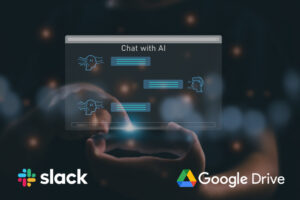 In today’s world, applications have become increasingly complex across various industries. This complexity makes software testing even more critical to ensure that the entire system functions as intended, meeting both functional and non-functional requirements.
In today’s world, applications have become increasingly complex across various industries. This complexity makes software testing even more critical to ensure that the entire system functions as intended, meeting both functional and non-functional requirements.
Traditional testing methods are no longer enough. Development teams need to innovate how they build and test applications. Test automation can significantly improve efficiency and accuracy, but traditional frameworks often require a lot of manual effort for script development and maintenance. This can limit their effectiveness and scalability.
AI-powered tools and testing services are here to address these challenges. By leveraging artificial intelligence (AI) and machine learning (ML) algorithms, these tools enhance various aspects of test automation, from generating test cases to analyzing results.
10 Ways AI is Transforming Software Testing
Integrating AI into your quality engineering processes can completely transform your approach to test automation. Here are ten ways AI can revolutionize your testing process:
- Visual Testing: Have you ever encountered a website with misplaced buttons, overlapping text, or missing images? These visual inconsistencies can be frustrating for users and damage your brand reputation. Visual testing tackles this issue by verifying the visual components of an application’s user interface (UI). It detects unintended visual changes, ensuring a consistent user experience.
- Intelligent Test Case Generation: After making changes to your application, are you unsure if it’s still stable? How often do your tests fail because of code modifications by developers? AI can analyze requirements, code changes, existing test cases, and code itself to automatically generate relevant test cases. This includes boundary conditions and potential edge cases you might miss.
- Self-Healing Test Automation Scripts: Agile development thrives on continuous improvement, but frequent code changes can strain traditional test automation methods. Test cases become fragile and require constant maintenance, slowing down the release cycle. AI-powered frameworks can understand these changes and intelligently adapt to them. This means self-healing test scripts, reduced maintenance overhead, and faster release cycles.
- Test Data Generation: AI algorithms can analyze existing data sources, like databases, to understand data patterns. Using this knowledge, AI can generate entirely new datasets that mimic real-world data. This synthetic data preserves the structure of your original data but masks sensitive information. By simulating various scenarios and edge cases, AI produces diverse datasets for testing different functionalities.
- Enhanced Defect Prediction and Reporting: Did you know that a failing test might not always indicate an actual defect? Sometimes, these are “false fails,” meaning the system might be working as expected. A lot of time is wasted on figuring out if there’s a genuine defect. AI algorithms can analyze past defect data, including defect types and frequency, to identify trends and patterns. This can save significant time spent on analyzing defects.
- Increased Test Coverage: Traditional testing methods often struggle to achieve comprehensive test coverage. AI bridges this gap by analyzing requirements, code, and existing tests to automatically generate a diverse set of test cases. This includes edge cases, positive and negative scenarios, that manual testers might miss. But it doesn’t mean you can automate everything. AI can help prioritize the right tests for automation, leading to increased efficiency, speed, and earlier defect detection.
- Automating Mobile App Testing: Mobile applications dominate today’s digital landscape, and most devices are now IoT-connected. However, ensuring a flawless user experience across a vast array of devices and operating systems can be a challenge. AI can help test mobile apps for UI, functionality, performance, user-friendliness, and security. It can also run numerous tests simultaneously, saving valuable time and resources.
- Automating Security Tests: Is your application secure from vulnerabilities, external threats, and data breaches? AI-powered security testing can identify threats and detect vulnerabilities, significantly improving your application’s security posture.
- Test Optimization and Maintenance: AI can analyze code changes, data, and historical test results to understand the potential impact of modifications. It can optimize your testing strategy by focusing on identifying the testing areas most susceptible to defects, recommending the most efficient testing approach for each case (manual, crowdsourced, or automation), handling unexpected scenarios, prioritizing critical tests during failures, and keeping the test data source updated.
- Testing APIs: API testing involves verifying the functionality, performance, and robustness of APIs, along with how they handle load tests. AI can generate diverse and realistic test data sets to ensure the API can handle unexpected inputs and edge cases, leading to more comprehensive testing.















